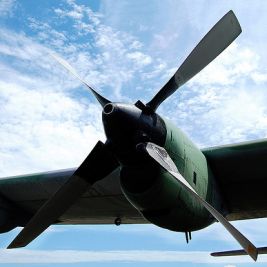Feathering is only possible with variable pitch propellers and means that the blades are turned such that their mid-to-outer section is aligned with airflow and they create minimal air resistance. This is done when the engine is shut down and the propeller should create minimal drag. This means also that all accessories on this engine will not be powered anymore.
Due to the normal twist of a propeller blade, some sections are still not completely aligned with airflow and produce more normal force and drag than they would if all sections could be aligned with airflow at the same time, but in total those forces will cancel out, and the propeller stops windmilling.

This picture of a C-130 engine with feathered prop should help to illustrate the concept.
On pure jets no equivalent setting is possible (we have to wait for variable-pitch fans to add this in the future).

